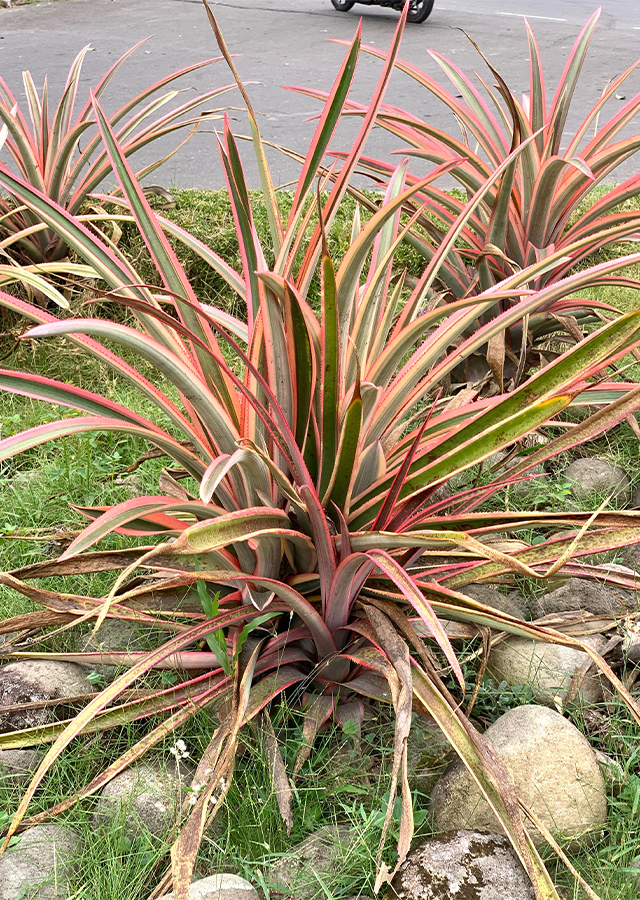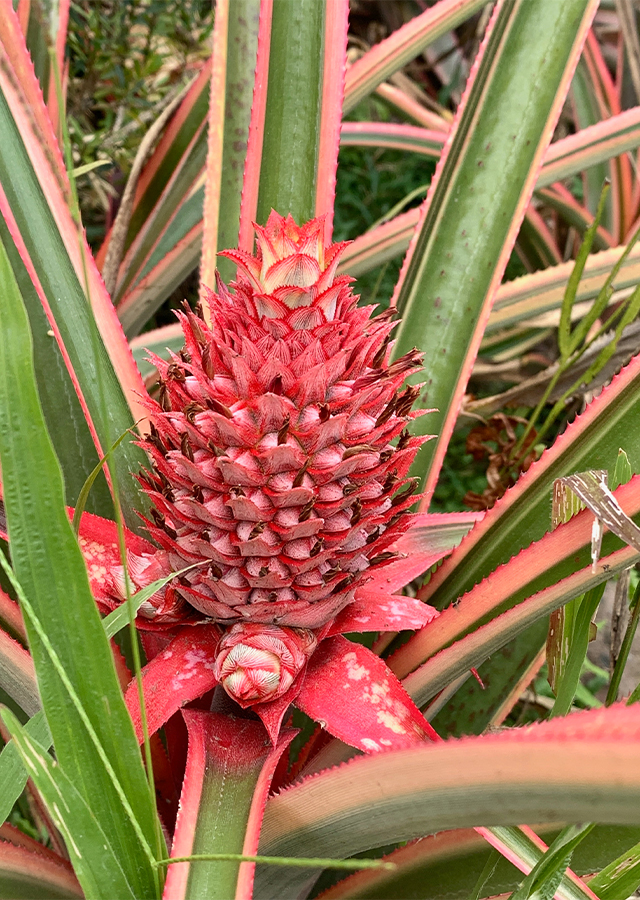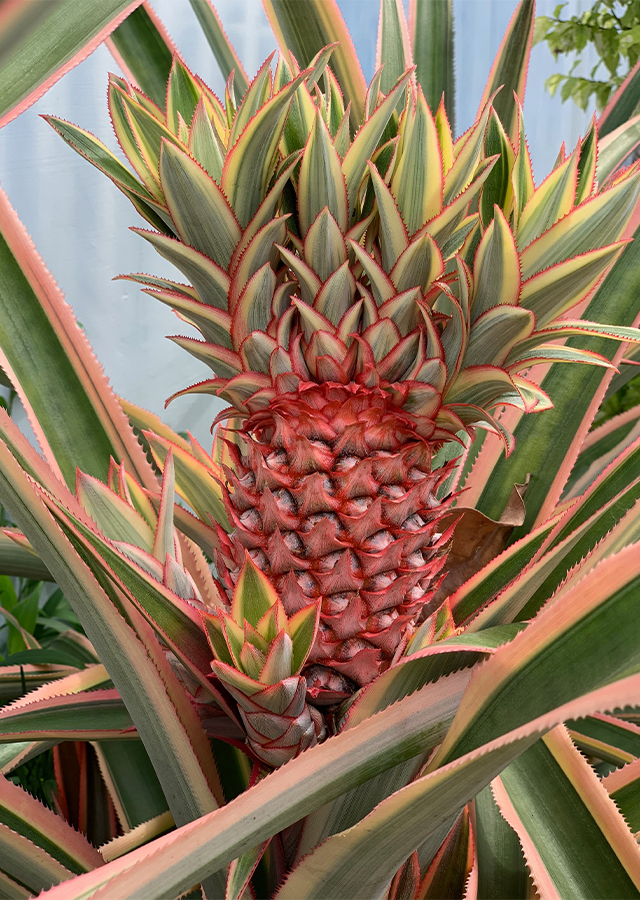Red Pineapple
Ananas comosus var. bracteatus (Lindl.) Coppens & F.Leal
Bromeliaceae
Location in our garden
Principal



Synonym
Ananas bracteatus (Lindl.) Schult. & Schult.f.
Ananas bracteatus var. albus L.B.Sm.
Ananas bracteatus var. rudis Bertoni
Habitus
Herbaceous. Short lived perennial terrestrial plant that grows up to about 90 cm
Part Used
Leaves
Fruit
Growing Requirements
Full Sunshine
Drought Resistant
Habitat
Terrestrial
Overview
It is native to Northeast Argentina, Bolivia, Northeast Brazil, Southern Brazil, Southeast Brazil, Colombia, Ecuador, Paraguay. This plant is one of the most unique and exotic house plants in the world because of its color. The fruit is edible.
Vernacular Names
Red pineapple, Wild pineapple (English), Ananas marron, Ananas requin, Ananas sauvage (French), Rote ananas, Zierananas (German), Pinyang pula (Tagalog-Phillipine), Pseudo-ananás, Abacaxi-ornamental, Abacaxi-vermelho, Ananás-ornamental, Ananás-vermelho, Gravatá-de-cerca, Gravatá-de-rede (Portuguese), Piña de playon, Ananas do mato, Ananas de cerca, Ananas bravo, Caraguatá (Spanish).
Agroecology
The plant grows in deciduous or semi-deciduous tropical forests up to 500 m asl with full sun and dry soils/drought. This variety will lose its red coloration and become only green and white/cream under too much shade.
Morphology
- Fruit - a small to medium, syncarp (leafy-topped, compound pineapple fruit), formed by the fusion of the ripe ovaries with the base of the sepals and the bracts and with the bark of the floral axis; the skin is tough and waxy, brownish pink to scarlet in colour; the flesh is pink-yellow in colour; the ripe fruit is more or less palatable (depending on clones), but it is smaller (less than one kilo), usually full of seeds, fibrous, lacking in juice and less fleshy than commercial pineapples, but very attractive.
- Inflorescence - the floral scape is up to about 50 cm long, robust and straight, develops at the center of the rosette and ends with an inflorescence formed by showy, spiny, imbricate bracts, with serrate, pink or bright red margins, which surround the small violet-purple or reddish pink flowers and with, on the top, a thick coma (tuft of leaves); this plant is monocarpic and will bear one flower stalk at a time though there may be 2 or 3 heads.
- Leaves - many, evergreen, arching, arranged in a spiral in a spreading rosette, simple, ribbon-like, long-attenuate, acuminate, pungent, up to 1,5 (or more) cm long and not over 40 mm wide above the dilated base, coriaceous, fibrous, solid dark green with a red hue with subdensely serrate margins with sharp spines that curve up toward the leaf tips.
- Stem - almost acaulescent or with a very short, trunk-like stem a the base of the rosette.
Cultivation
It can be cultivated by a sucker in open air in the tropical and humid subtropical climate countries, with temperatures which it is good to keep over the 14 °C, best 20-24 °C.
Chemical Constituents
Bromelain, a proteolytic enzyme, cholestanodiol, stigmasterol, sitosterol, 2-glyceryl ester of p-coumaric acid, a new compound 2-glyceryl ester of ferulic acid.
Traditional Medicinal Uses
- In the Phillipines, root decoction is used for diarrhea.
- In the Indian Ocean, Caribbean, and South America, decoction of leaves is considered abortive.
- Studies have suggested antioxidant and anti-inflammatory properties.
Part Used
Reference Sources
- Flora & Fauna Web. 2021. Ananas bracteatus 'Striatus'. https://www.nparks.gov.sg/florafaunaweb/flora/1/6/1662. 26 October 2021.
- Phillipine Alternative Medicine. 2021. Pinyang pula. http://www.stuartxchange.org/RedPineapple. 26 October 2021.
- Plant of the World Online. 2021. Ananas comosus var. bracteatus (Lindl.) Coppens & F.Leal. http://www.plantsoftheworldonline.org/taxon/urn:lsid:ipni.org:names:20010453-1. 26 October 2021.
- The Encyclopedia of Bromeliads. 2021. Ananas comosus var. bracteatus (Lindl.) Coppens & F.Leal. http://www.llifle.com/Encyclopedia/BROMELIADS/Family/Bromeliaceae/23911/Ananas_comosus_var._bracteatus. 26 October 2021.

